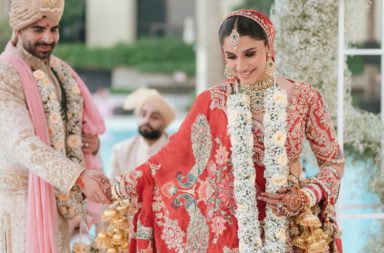The community of social media influencers is increasing and now includes a newer variety of players who may not even be a celebrity, writes Efficacy Worldwide’s Vishnu Sharma. And brands are engaging their users and consumers in authentic conversations via these influencers.
By the end of 2021 social media industry witnessed two important developments. First, TikTok, the famous video-sharing platform surpassed technology giant Google to become the most popular website of 2021, according to a report by IT security company Cloudflare. Second, the Screen Actors Guild-American Federation of Television and Radio Artists has expanded its membership and coverage to online content creators.
Both these events are based on a basic premise: With an increase in resources and platforms like the video-sharing app, the impact of new-age influencers has grown multi-fold. And in recent times, brands have come up to utilize influencer marketing in a big way.

According to an Insider Intelligence and Mediakix report, by 2022, brands would be spending up to USD 15 billion on influencer marketing – an already established marketing strategy when nothing seems real. It is the benefit in terms of ROI that brands have been spending on influencer marketing. Sectors, including banking, automobile, lifestyle, home and décor, consumer durables, and fast-moving consumer durables, were some of the sectors that have been spending huge on the segment.
Now, new sectors, including personal finance, fintech, information technology, hospitality, climate, environment, etc. are roping in influencers to create stories around brands and their products.
What is driving the growth of influencer marketing?
For several years now, the advertising and marketing landscape has relied heavily on traditional entertainment stars and celebrities for their promotion. But since the beginning of 2020, the landscape has fast shifted to use non-traditional professionals and internet stars.
Promotional campaigns also use stars famous otherwise in the online space and are often under-utilized. Their growing influence over the internet, the rise in resources and platforms like the TikTok videos, YouTube Shorts Instagram Story, etc. have made it easier for rising influencers to create stories of impact.
What makes them leave an impression, literally!?
It is common knowledge that influencers are popular and well adored by their fans. And the following grows with more meaningful messaging. It is their story and the content they produce that appeal to a large number of followers. Even differently-abled influencers are among the top-notch influencers. The latter group sometimes discusses diversity and inclusion, styling, and ways of life with their fans. Some famous names include Bernadette Hagans, Pipa Stacey Tess Daly, etc.
Events like TikTok’s dominance the Guild’s expansion of membership and the emergence of new influencers depict a change: A new breed of social media influencers have emerged. These are not-so-common folks who possess a supreme sense of creativity and authenticity. Some have even got lucky! One can safely say that it is a good mix of creativity, persistence, and luck.
As a result, the marketing has gradually evolved to use celebs and category influencers. Both segments are making brand campaigns worthwhile. But what makes them shine is the content they produce. And their conversations have a direct relation to the product they endorse. In most cases, influencers are mindful of the product they stand for, and there is a responsibility they have along with marketers working for the brands.
Several factors have led to where we stand today with the use of influencers. And why is there a need for real conversations? Catastrophic events such as the COVID pandemic, disasters over the past several years, and a need for more human stories have made marketers look for authentic conversations.
Also Read: Instagram introduces ‘Subscriptions’ to help creators earn recurring monthly income
Authenticity conversations pay
But not all conversations are real. Last year, several social media influencers in the UK, with over 2 million followers, were questioned over their endorsement of fake clothing, impersonating brands, including GUCCI, Prada, etc. Influencers need to take a hard look at what they are promoting. Consider the example of Elizabeth Holmes, the founder of Theranos.
She is now accused of fraud and duping investors. She used the power of influencers, including former and current presidents, celebrities to garner support and attract investments. Hence, what seemed real was a farce. But the responsibility of authenticity lies with both the influencers and the brands that they endorse.
Real conversations will remain relevant
Influencers having niche expertise and those touching a chord with the masses will continue to make the work of marketers easier. There are lessons to be learnt. There are scores of such examples within the domestic market. Take the example of Darshan Singh, an influencer with over 2 million followers on YouTube, shares knowledge on innovative farming practices and techniques.
If you are a brand custodian of your company and you are thinking of roping in an influencer, do not worry about the number of followers, think about the story, think about solid content and its narration. Fame and returns will follow.
The article is authored by Vishnu Sharma, Founder & CEO, Efficacy Worldwide.


